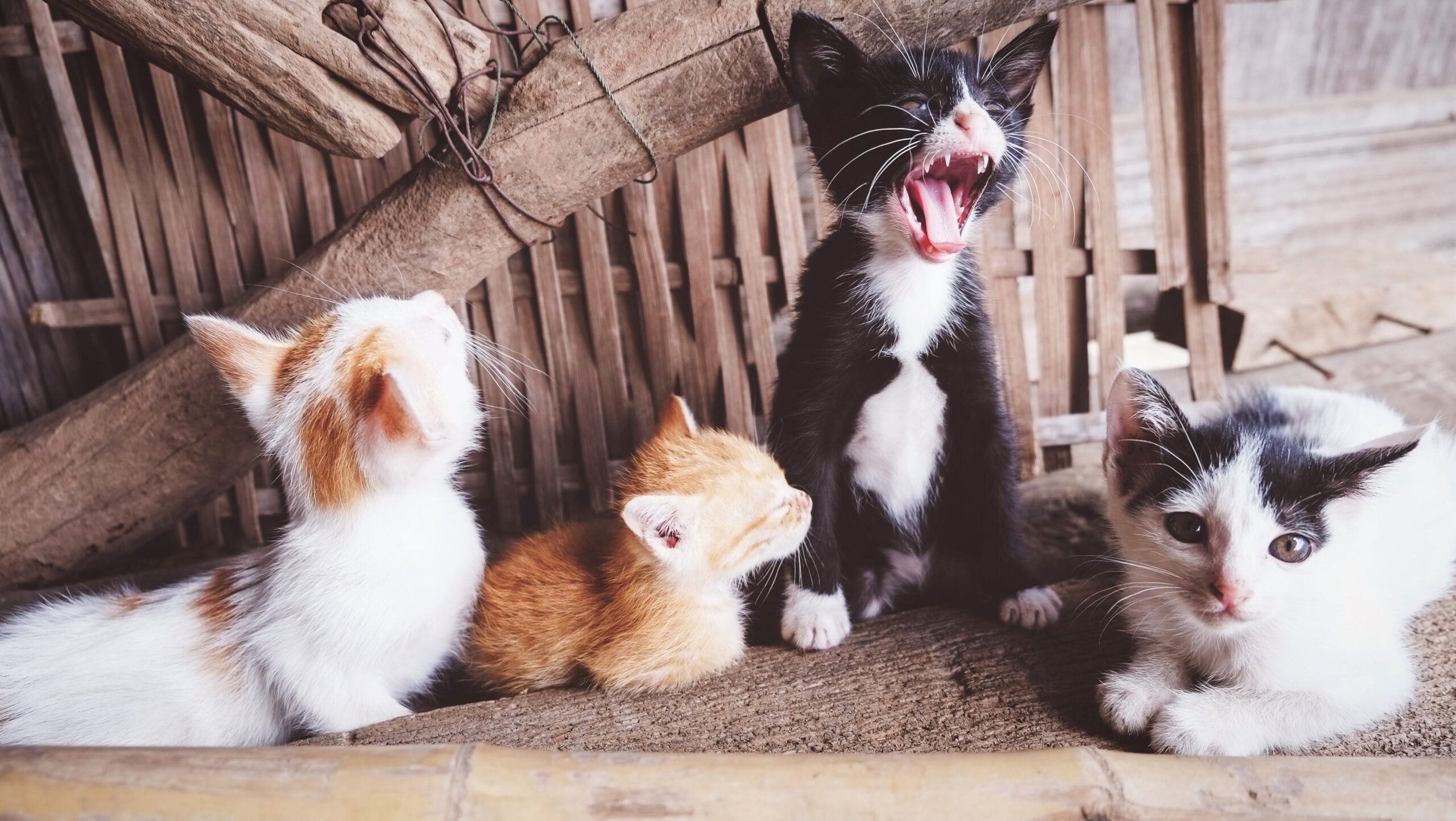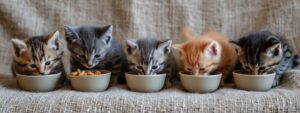
The arrival of kittens into our lives brings happiness and friendship together with dietary challenges that require new learning experiences for their caregivers. Finding suitable food for your kitten requires more than buying a random product from the shelves. Your responsibility as a cat parent includes giving your kitten the right nutrients needed for healthy development into an adult cat.
The guide provides details to choose the best cat food for kittens with selection criteria and presents top market recommendations. This article will help both new pet owners and experienced cat lovers develop absolute confidence about choosing the best food for their furry companion.
Why Kitten Nutrition Matters
The importance of appropriate nutrition for kittens requires understanding before moving onto specific food types. Kittens require special nutrition because their rapid growth needs combined with high energy requirements and developing immune systems.
Kitten-specific food holds significant importance because of these three factors:
- The growth rate of kittens surpasses human babies since they expand at a rate of 15 times faster. Their quick growth requires them to consume food that packs numerous calories.
- The essential nutrients including proteins and fats and taurine together with other components are vital for kitten development. Taurine serves as an essential nutrient because it protects both heart and vision health.
- The small size of kitten stomachs requires food portions that contain high nutritional value but are served in small amounts.
Different Kinds of Cat Food for Kittens
The selection of kitten food options requires your attention for proper feeding. The following analysis of different types of cat food includes their advantages and disadvantages to assist your decision-making process.
-
Dry Cat Food (Kibble)
Dry food stands as a widely accessible option that remains available to kittens throughout the market.
Pros:
- Long shelf life
- Budget-friendly
- The food helps dental health by lowering the formation of tartar.
- Easy to portion and store
Cons:
- The moisture content in dry food remains lower than what wet food contains.
- Younger kittens may experience difficulty chewing this food type
- Dry food serves as an appropriate main diet for kittens when introduced to them at an early age. Hill’s Science Diet Kitten Dry Food represents a good choice for your kitten because it was developed to support their growth needs.
-
Wet Cat Food (Canned Food)
The high water content in wet food appeals to kittens and adult cats as well as it does to human consumers.
Pros:
- High protein content
- This type of food provides excellent hydration benefits for cats who do not consume enough water.
- Softer texture for delicate teeth
Cons:
- Typically costlier than dry food
- Shorter shelf life once opened
Wet food serves as an excellent choice for kittens who are at risk of dehydration. The Purina Pro Plan Kitten Wet Food stands out as an excellent option because it provides balanced nutrients through an attractive texture.
-
Semi-Moist Cat Food
The combination of dry and wet cat food characteristics found in semi-moist products has lost its appeal in modern times.
Pros:
- Easy to chew
- The food comes in single-serve pouches which provides convenience for
Cons:
- High sugar content in some brands
- Nutritional concerns with certain products
- Raw diets should only be given to kittens as occasional treats instead of regular meals because they lack sufficient nutritional content.
-
Raw Diets
Many pet owners are curious about raw food diets which leads some of them to explore raw feeding options for their kittens.
Pros:
- Mimics a “natural” feline diet
- The food contains premium meat ingredients along with minimal filler content.
Cons:
- Risk of bacterial contamination (e.g., Salmonella)
- Requires careful preparation and storage
Pet owners must seek guidance from veterinarians or pet nutritionists for feeding raw diets because proper preparation needs their expertise.
-
Homemade Food
Owners who prepare their kittens’ meals prefer this method because they want to control all food ingredients.
Pros:
- Full control over ingredients
- The diet can be adjusted to meet individual nutritional requirements of cats.
Cons:
- Time-consuming to prepare
- Risk of missing essential nutrients without proper guidance
Use this diet only after consulting with a veterinarian who will guide you through homemade diet preparation. Additional pre-approved additives must be used as supplements.

How to Choose the Best Food for Your Kittens
The abundance of kitten food choices creates a dilemma about selecting the most suitable option. The following steps will help you select the most suitable option.
- Read the Label
Select food that explicitly states it is formulated for kittens. The formulas satisfy all requirements established by AAFCO for nutritional growth.
- Focus on High-Quality Protein
The dietary requirement of kittens as obligate carnivores demands that their food should begin with animal protein as its main component.
- Choose Foods with Added Nutrients
The essential nutrients for brain development include DHA and taurine which support heart health.
- Consider Your Kitten’s Unique Needs
Hypoallergenic or grain-free formulas are the right choice for kittens who have allergies or sensitivities. Blue Buffalo Wilderness Kitten Recipe stands as one of the brands that provides suitable options for particular dietary requirements.
- Mix and Match
Your kitten will benefit from receiving dry and wet food as a combined feeding approach. The combination of kibble with wet food provides better taste and moisture content.
Frequently Asked Questions about Kitten Food
Q1. Is it acceptable to provide adult cat food to my kitten?
Adult cat food does not contain the right combination of calories and essential nutrients which kittens need to grow properly. Always choose food products that specifically mention kitten nutrition.
Q2. At what frequency should I provide food to my kitten?
Newborn kittens need three to four small feeding sessions every day until they reach six months of age. After six months of age kittens should transition to two or three meals per day.
Q3. What is the appropriate time to start feeding your kitten adult cat food?
The introduction of adult food should begin at twelve months of age by adding small amounts to help kittens adjust their digestion smoothly.
Q4. Which type of cat food should I choose between dry or wet?
Both have their benefits! The combination of wet and dry food provides complete hydration benefits while supporting dental health.
Need Help Deciding? Here’s a Handy Comparison Chart
|
Type of Food |
Pros |
Cons |
Best For |
|
Dry Food |
Long shelf life, budget-friendly |
Low moisture content |
Primary daily feeding |
|
Wet Food |
High moisture, flavorful |
Costly, shorter shelf life |
Hydration and occasional meals |
|
Semi-Moist Food |
Easy to chew |
High sugar content |
Occasional treats |
|
Raw Diet |
Natural, high protein |
Risk of contamination |
Expert-guided feeding |
|
Homemade Food |
Control over ingredients |
Time-consuming, nutrient gaps |
Special dietary needs |
Wrapping It Up
Choosing appropriate food for your kitten at this stage will establish the basis for their healthy and joyful existence. The dietary needs of each kitten differ between dry kibble and wet food and raw diets with their respective advantages and disadvantages. A proper cat food selection consists of meeting individual nutritional needs together with offering a complete balanced dietary plan.
When uncertain about which food choice to make look for advice from your veterinarian to make the decision based on your kitten’s individual growth and health needs.
Your kitten will thrive and produce happy purring sounds throughout many years when you provide appropriate nutrition together with excellent care and plenty of affection.
Leave a Reply